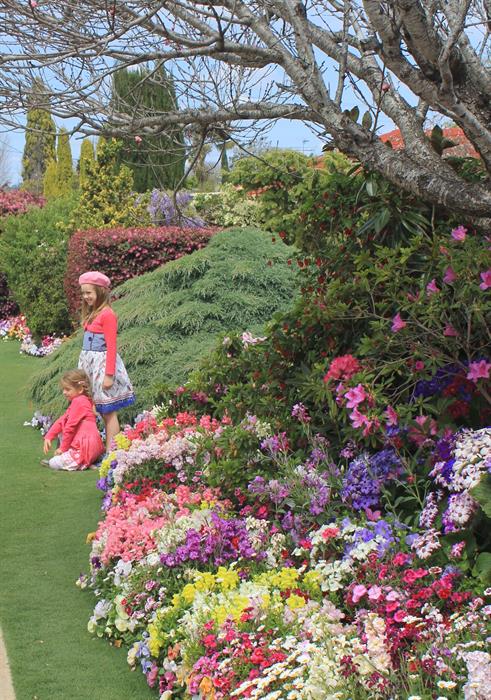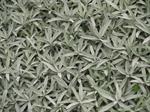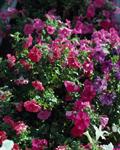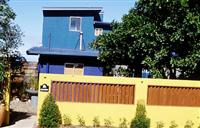All Year Colour
Often we buy plants on impulse, ending up with a garden which is alive in spring, yet dull the rest of the year. A little thoughtful planning, however, can result in a garden which is alive with colour: with flowers all year round, and an ever changing array of colourful foliage and fruits.

USING COLOUR IN THE GARDEN
Different colours will create different effects in your garden.
- Warm colours (ie. reds, yellows and oranges) are very dramatic but can be overpowering if not used with care.
- Cool colours (ie. whites, pastels, blues, greens) are more subtle but may need a stronger background to be really effective.
- Massed colours (ie. planting in drifts) are generally more effective than individual spots of colour dotted around the garden.
- Opposite colours can be used to create contrasts in the garden, for example, plantings of yellow and blue flowering annuals, or red and white azaleas.
- In soft, dull light, cool colours will tend to fade into the background. Similarly, bright, strong light can tend to bleach paler shades away.
COLOUR CREATIONS
Use colour in the garden to create:
- A particular theme or mood. Theme gardens based on a particular colour or combination of colours are currently very popular. One of the most effective colour themes is the combination of white flowers against a background of silver and dark green foliage. The overall effect is cool and harmonious. For a more dramatic or 'tropical' feel, try combining shades of yellow, orange and red.
- A sense of depth or distance. Warm colours tend to draw the eye. Placing them towards the front of the bed, will make the garden appear shorter. Cool colours recede. If they are placed in the foreground, the bed will appear to be deeper or longer than it really is. A feeling of distance can also be created by repeating drifts of warms colours followed by cool colours throughout the garden.
- Focal points. A splash of vivid colour is always an eye catching feature in the garden.
TIPS FOR CHOOSING PLANTS

- Choose plants which have flowers for a longer period of time. For example some annuals will only flower for a few weeks, while others, such as Petunias will flower for much longer.
- Avoid using too many plants which flower lightly all year but never have a heavy crop of flowers.
- Avoid using too many plants which are used as cut flowers. Gardens are often bare of flowers because they are always getting picked.
FOLIAGE EFFECTS
Foliage is all too often the forgotten part of the garden's colour scheme, and yet it can contribute to colour in the garden just as much as flowers, if chosen carefully. Plants come in a tremendous variety of leaf colours, from reds and purples, to greys and golds. In autumn, the leaves of deciduous plants change colour before they drop to the ground. Some plants seem to change colour from one part of the day to another as the sun is reflected from the leaves in different ways. Try looking at the difference in foliage colour between afternoon and sunset. Some plants have variations in foliage colour from one time of the year to the next. For many plants the new or young foliage may be strikingly different to the adult foliage, for example, being bronze or purplish in colour.

What Affects Foliage Colour?
Foliage colour can be influenced by a number of factors, including:
- Temperature - cold temperatures bring out the colour in some plants, for example, the changing colours of autumn foliage on deciduous trees. Warm temperatures bring out colour in others.
- Light many plants have more brilliant colours in their foliage when in full sunlight, and lose their brilliance in the shade.
- Growth Rate Rapid new growth is often more colourful than slower or older growth (think of the new reddish growth of Photinias and Syzygiums). These colourful growth flushes can be encouraged by regular fertilising, watering and pruning.
Blue building and yellow wall. Note how opposing colours create contrast. Imagine if it were a cream brick house behind a yellow wall; nowhere near the same effect.

HOW TO LEARN MORE
See our Gardening, Landscaping and Horticulture Courses (click) -and browse
Use our FREE COURSE & CAREERS ADVISORY SERVICE (click) and apply
Browse our Bookstore www.acsebook.com/ -see titles published by this school and written by our staff

More from ACS
Ebook - Identify, select, grow, care, propagate, landscape,
dictionary of perennials.
View eBook
Get a great overview of plant taxonomy, and learn to identify over 100 plants as well as many plant families.
View Course
Ebook - Know what you can grow where and how with this accessible text.
View eBook
Ebook - a great informative text to extend your knowledge and get it right the first time!
View eBook
Course - Popular design certificate that has launched many enthusiastic and talented design students into the industry.
View Course
Course - for: Nurserymen, Garden Centre Staff, Gardeners, Landscapers, Cut Flower Farmers
Seed Producers, Merchants, Breeders, Hobbyists.
View Course